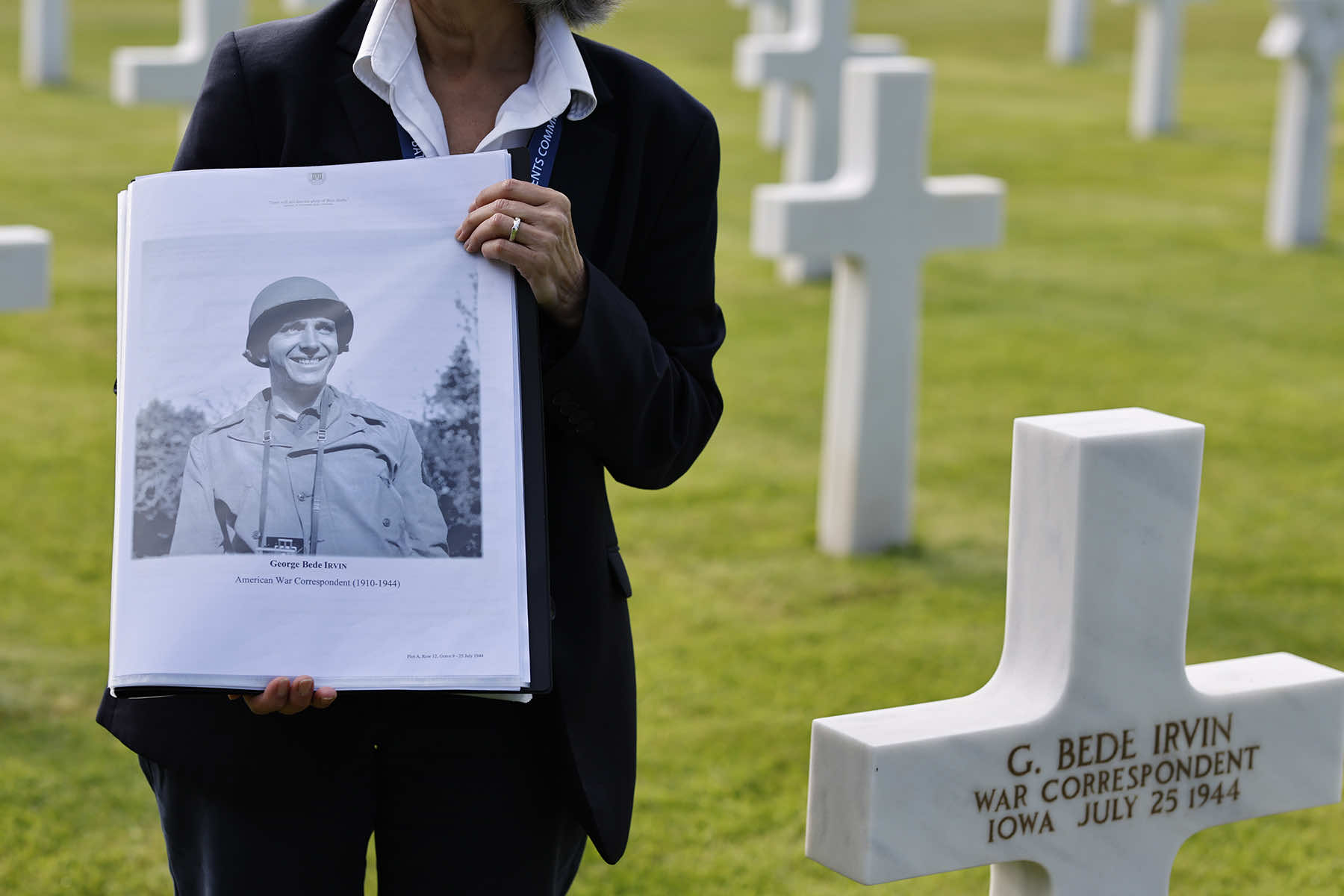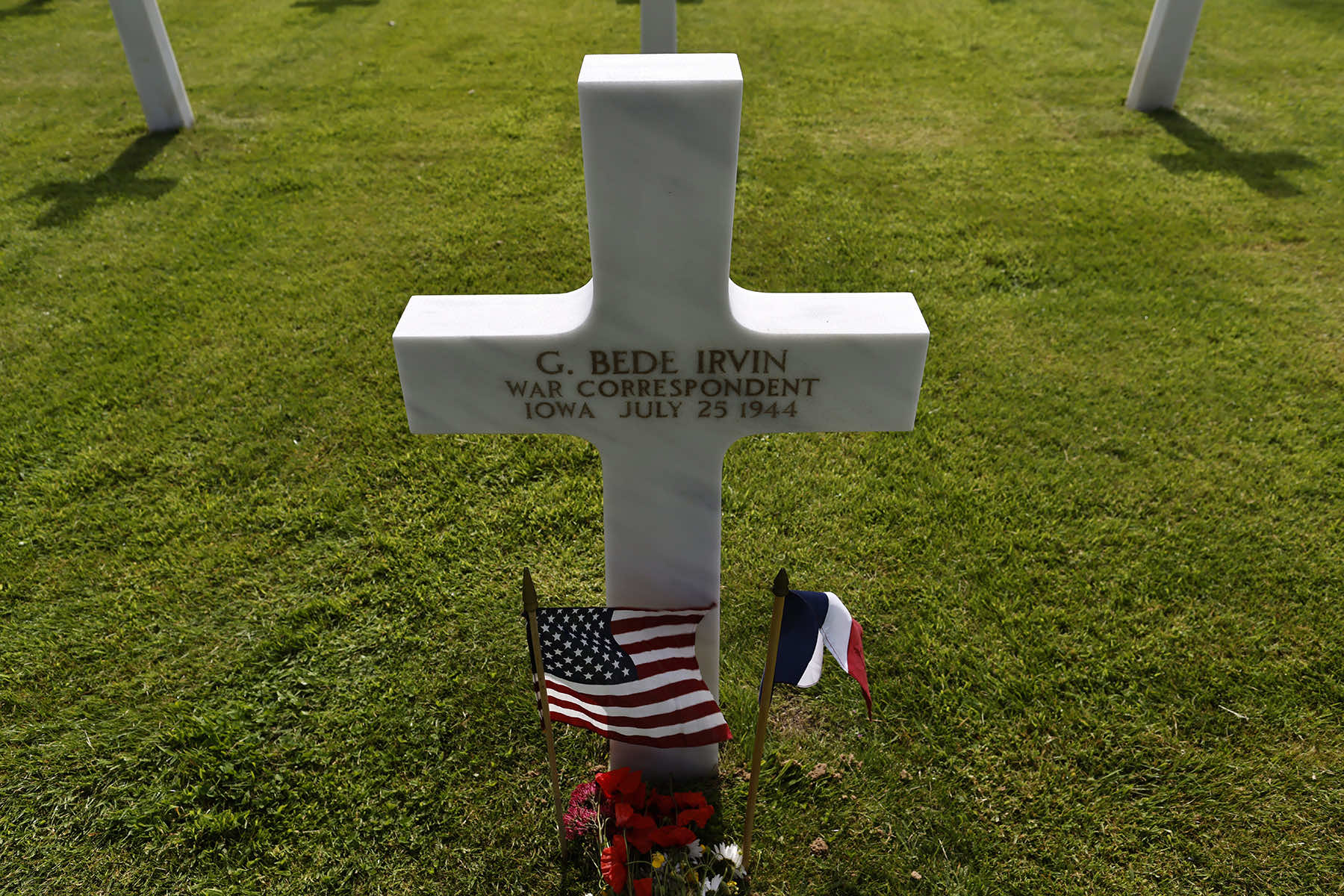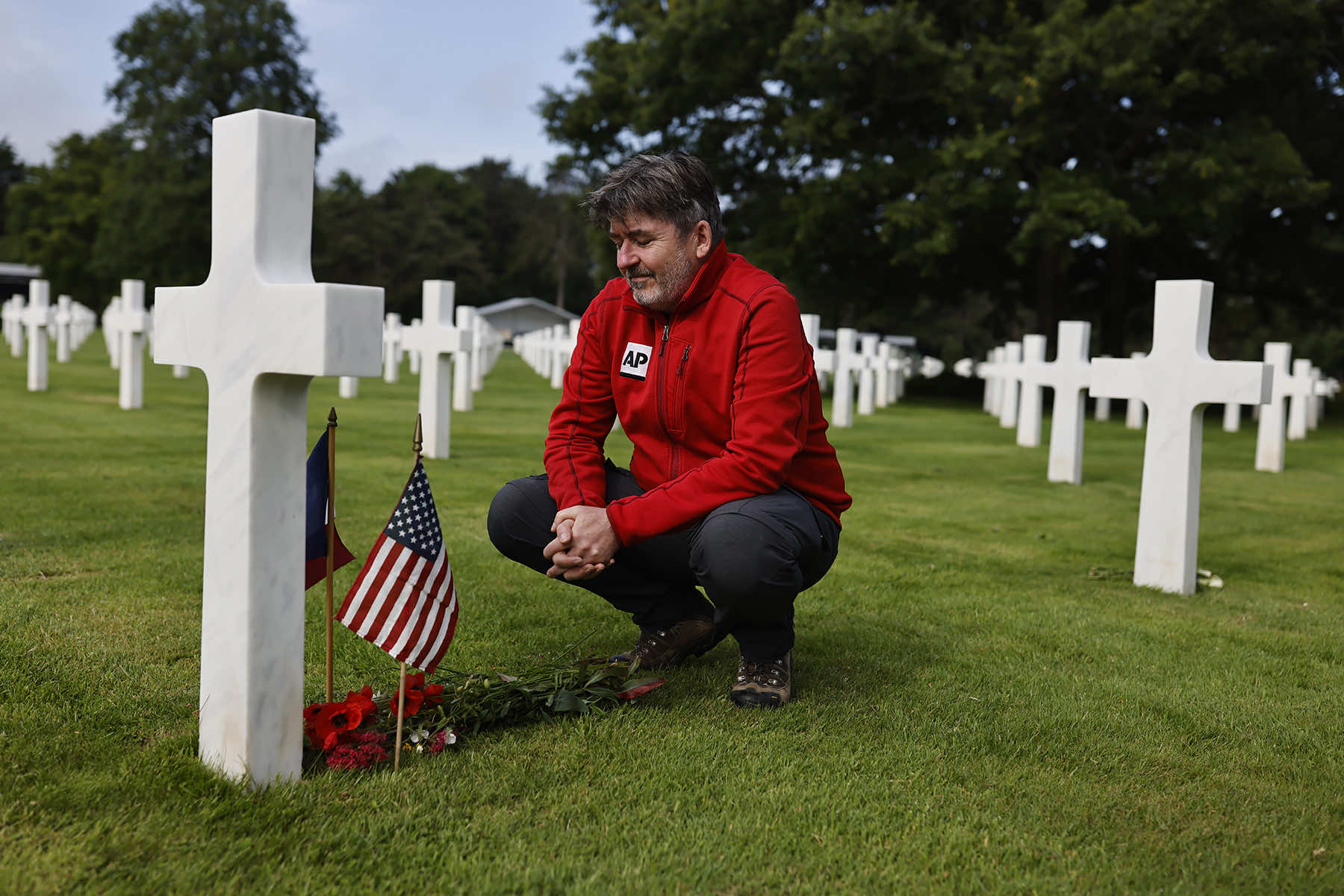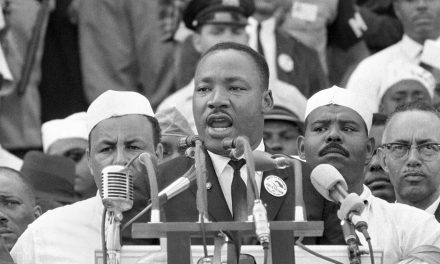
When Associated Press correspondent Don Whitehead arrived with other journalists in southern England to cover the Allies’ imminent D-Day invasion of Normandy, a U.S. commander offered them a no-nonsense welcome.
“We’ll do everything we can to help you get your stories and to take care of you. If you’re wounded, we’ll put you in a hospital. If you’re killed, we’ll bury you. So don’t worry about anything,” said Major General Clarence R. Heubner of the U.S. Army 1st Infantry Division.
It was early June 1944 — just before the long-anticipated Normandy landings that ultimately liberated France from Nazi occupation and helped precipitate Nazi Germany’s surrender 11 months later.
On D-Day morning, June 6, 1944, AP had reporters, artists, and photographers in the air, on the choppy waters of the English Channel, in London, and at English departure ports and airfields. Veteran war correspondent Wes Gallagher — who would later run the entire Associated Press — directed AP’s team from the headquarters in Portsmouth, England, of Supreme Allied Commander Gen. Dwight D. Eisenhower.
The greatest armada ever assembled — nearly 7,000 ships and boats, supported by more than 11,000 planes — carried almost 133,000 troops across the Channel to establish toeholds on five heavily defended beaches; they were code-named Utah, Omaha, Gold, Juno, and Sword and stretched across 50 miles of Normandy coast. More than 9,000 Allied soldiers were killed or wounded in the first 24 hours.
Having heard on German radio that the landings had begun, Gallagher hurried to the British Ministry of Information to await the official communique. It came just before 9 a.m. with this brief instruction: “Gentlemen, you have exactly 33 minutes to prepare your dispatches.”
At precisely 9:32 a.m., the doors opened and the journalists poured out to release their reports. Gallagher’s FLASH appeared via teletype in the New York headquarters of AP just one minute later.
LONDON — EISENHOWERS HEADQUARTERS ANNOUNCES ALLIES LAND IN FRANCE
The 1,300-word story that followed began: “Allied troops landed on the Normandy coast of France in tremendous strength by cloudy daylight today and stormed several miles inland with tanks and infantry in the grand assault which Gen. Dwight D. Eisenhower called a crusade in which ‘we will accept nothing less than full victory.'”
As men on either side of him were killed, AP correspondent Roger Greene waded ashore on the eastern end of the landing front. Sheltering in a bomb crater, Greene pounded out the first AP report from the beachhead, with wind flicking sand into his typewriter keys and rattling the paper.
“Hitler’s Atlantic Wall cracked in the first hour under tempestuous Allied assault,” he wrote.
On Omaha, the deadliest invasion beach, AP’s Whitehead lost his bedroll and equipment and nearly his life as he landed with the 16th Regiment of the 1st Infantry Division.
“So many guys were getting killed that I stopped being afraid. I was resigned to being killed, too,” he later recalled.
He witnessed German heavy machine-gun fire, mortar, and artillery rounds raking landing craft and pinning down U.S. soldiers, vehicles, and supplies that “began to pile up on the beach at an alarming rate.”
Whitehead never forgot the calmness of Colonel George A. Taylor urging troops onward by yelling: “Gentleman, we’re being killed on the beach. Let’s go inland and be killed.”
The Battle of Normandy was underway, with Allied forces pushing off the beaches and fighting their way inland in the following days and weeks. By June 30, the Allies had landed 850,000 soldiers, nearly 150,000 vehicles and more than half a million tons of supplies.
Casualties mounted on all sides and among French civilians. By the second half of August, with Paris being liberated, more than 225,000 Allied troops had been killed, wounded or were missing. On the German side, more than 240,000 had been killed or wounded and 200,000 captured.
The dead included AP photographer Bede Irvin, killed July 25 near the Normandy town of St. Lo as he was photographing an Allied bombardment. A U.S. bomber’s payload fell short of its target and shrapnel caught Irvin as he was diving for the shelter of a roadside ditch. He was 33.
In its September 1944 edition, AP’s in-house magazine said the native of Des Moines, Iowa, had until then survived some of the worst fighting in Normandy and “had only one complaint — that he was not seeing enough action.”
Irvin is buried in the Normandy American Cemetery overlooking Omaha Beach. It was the first American cemetery in Europe of World War II, set up two days after D-Day. It contains 9,387 graves.
On June 3, colleagues from AP’s Paris bureau, covering the 80th anniversary of the landings, laid flowers at his grave.




















